https://www.theguardian.com/world/2018/nov/16/congo-drc-sleeping-sickness-upside-tropical-disease-ntd?CMP=fb_gu&fbclid=IwAR3cEKbNOSYBPY4tJcr0KOtPQXHTmIvcj0xtillkrObpGc6xz3Xr2Zk9jNE
The big sleep: how the world's most troubled country is beating a deadly disease
Beset by war, violence and political instability, the Democratic Republic of the Congo is not the ideal place to be trying to stamp out sleeping sickness, a killer illness. But that is what is happening
by Sarah Boseley. Photographs by David Levene. Video by Millie Harvey in Mushie, the Democratic Republic of the Congo
The Kasai river slides far across the plain. When the rains come, the sandbars in the middle – where fishermen have built temporary encampments consisting of straw huts – will disappear, making the river wider still.
Local people will tell you it’s just a rivière; in this country, they reserve the word fleuve, a big river, for the mighty Congo alone.
Mushie is built on one bank of the Kasai river, in the way that towns in other countries spawn from main roads. The town is two hours in a fast boat from Bandundu, and seven hours along the river in the other direction from the provincial capital, Inongo. There is no road. It’s only when you travel these inland waters, passing the standing fishermen paddling their pirogues – passing the dugout canoes and the big, flat cargo boats, laden perilously low in the water with families sitting on top of their goods – that you get a true sense of the scale of the Democratic Republic of the Congo. The country is as big as western Europe, with its people scattered across small villages lying along the rivers, in the forests and on the plains.
If you were going to try to stamp out a lethal disease, you wouldn’t want to be doing it here. Yet that is what’s happening. In DRC, a country tarnished in international eyes by war and violence, Congolese doctors are finally winning the battle with sleeping sickness, a disease of west and central Africa that became an epidemic thanks partly to the enforced displacement of peoples and poverty caused by the policies of invading European colonialists.
At the turn of the millennium, there were roughly 30,000 cases in DRC. Last year, there were 1,100. In the first half of this year, 350 were recorded. On the horizon is the tantalising prospect of elimination. The vast majority of the world’s remaining cases, 85%, are in DRC. “If DRC eliminates sleeping sickness, the world eliminates sleeping sickness,” says Dr Victor Kande, former head of the government programme to fight the disease.
Kande, the man they call the father of sleeping sickness, is 68 now and walks carefully, eyes on the uneven ground, taking the long way around to avoid steps to the hospital ward at Mushie. He is venerated. And passionate. “You have to love it,” he says of the work.
At the age of 27, shortly after finishing medical school, he was the only doctor for 11,000 people in a village in Équateur province, to the north of Bandundu. A 12 year-old boy was brought in by his parents, tied up with ropes. His name was Jérome.
“He was talking a lot. He was angry. His parents said we brought him here because he can’t be with other people. He is very agitated,” says Kande. “They took him to a traditional healer but he could do nothing.”
Kande had been briefed on the diseases he would see in this region and the symptoms rang a bell. He went away to look through his medical textbooks: sleeping sickness. The early stages were innocuous – headaches, joint pains, fever. Then the symptoms would apparently go away. Sometimes it would be several years before the madness began. Victims would shout, accuse people, get violent. And start sleeping a lot. Then a lot more, until they could barely be woken for food. Finally, they would slip into a coma and die.
“I went back to see the patient and felt his lymph nodes,” he says.
They were lumpy, the most telling sign. He took a fluid sample. The lab confirmed that the trypanosome could be seen under the microscope, the parasite that causes sleeping sickness, transmitted from one person to another through a bite from the tsetse fly, which feeds on human blood.
“I asked the nurse how we treat sleeping sickness,” says Kande. “He said that there was a store where there were drugs from Belgian times.”
This was in 1977. The Belgians left after independence in 1960.
“We opened the box and found melarsoprol. There was no expiry date,” says Kande. “I read in my book how to use it.”
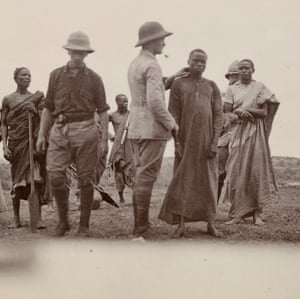

Melarsoprol, an arsenic-based drug, was introduced for the treatment of sleeping sickness in 1949. For over half a century, it was the only drug for the late stage. It kills 5-10% of the patients treated. Jérome was among the lucky ones, probably because he was young. He had nine injections over three weeks and was cured.
“I was really happy. The young man became really close to me. He came to my house and ate with me and became like my son,” says Kande.
DRC, a country riven with problems, is an ever present near the bottom of global leagues for development indicators. The war that raged in the country from 1998 to 2002 war was the most lethal anywhere in the world since the second world war. A second Ebola outbreak in a year is now slow-burning in the worst possible region of the country, conflict-riven North Kivu, where UN peacekeepers try to deter rival factions from slaughtering each other.
But amid political uncertainty and disturbances, Congolese doctors have not wavered in their determination to end the scourge of sleeping sickness. The national programme for the control of African human trypanosomiasis sends out screening teams to actively search for cases in villages, offering blood tests, lymph node fluid testing and even lumbar punctures. They target settlements in the forests and on the river banks, where the tsetse flies live and feed on the blood of fishermen, farmers and their families.
In these remote rural areas, where there is no running water or electricity without a generator, Congolese doctors and nurses have been running clinical trials of a new drug that could transform treatment.
Bandundu alone, where most cases occur, spans 300,000 sq km – an area bigger than the UK. And it’s what they call “dynamic”. Whole villages move. They run from sleeping sickness and are not on the map. The government does not know they exist. Using satellite technologies, heat sensors that can suggest where there are inhabited houses in the forests, and sampling data from census teams that give an idea of how many generally live under one roof, the programme has found 10,000 villages that nobody knew were there.
In the bigger villages, mobile screening teams set up under shelters made from palm leaves and branches. A massive, battered register on the first of three tables lists every family in the village – with spaces for children yet to be born – and the years in which they have been screened. Everyone who arrives is allotted a number and joins the queue, sitting on a snaking row of plastic chairs, moving up one chair at a time until they reach the second table, where basic screening – the card agglutination test for trypanosomiasis (Catt) – is performed. They get to choose which finger is pierced with a needle, and their blood is then collected in a thin plastic tube. The screener, in a white coat, mixes a drop with a deep-blue coloured fluid containing antigen on a paper slide. When 12 blood spots are ready, the paper is gently vibrated for five minutes in a small machine. If there is a clumping of dark specks in a blood spot, the person is recalled and sent to a third table for further tests.

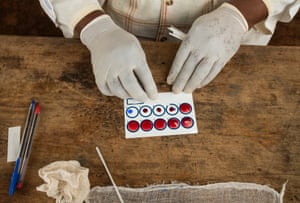
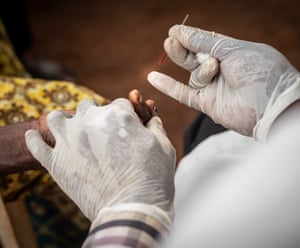
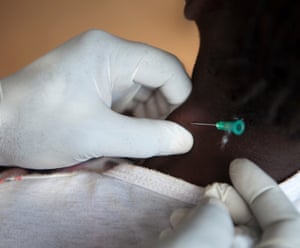
Some faces show fright, even horror, as they sit alone at the third table. Belinda Bizaka, 17, in school uniform with two blue biros twisted in her hair, looks bored and embarrassed. She’s back for a rescreen because this happened three months ago. The confirmatory tests that time were negative. There are three, involving two more blood tests and a sample of lymph node fluid from her neck.
Belinda says she didn’t know tsetse flies carried sleeping sickness. “I was bitten on the farm,” she says, muttering the words with teenage hostility. “This month. I go to school every day and then work on the farm.” Once more, the tests are negative. Belinda stares into the middle distance.
Mini mobile teams on motorbikes access the remoter villages, carrying all the screening kit they need. The tablets they bear – which have the potential to transform not only the fight against this disease but, in future, others too – record information about the location and health of individuals that is automatically uploaded to a data bank owned by the ministry of health in Kinshasa. Malaria cases, childbirth, vaccinations. One day, all that knowledge could be collected and acted upon.
The motorbikes could not get to Chaida’s village, however. The little boy is seven, but looks like a four-year-old. He has been ill for years, says his father, Zindo, and suffers from headaches, fever and lack of appetite.
Zindo: ‘My son was sleeping and whining all the time’
“He used to cry all the time,” says Zindo. “We went to health clinics and were told it was malaria. When the treatment the boy had did not work, we thought it was sorcery. We went to a traditional healer.”
Chaida got no better and was falling asleep all the time. His father heard about the screening team visiting Lebida village. He put his small son in a pirogue and paddled the half hour along the river to get there. The tests revealed the parasites. A lumbar puncture in the base of the spine showed it was stage two sleeping sickness, affecting the brain. Chaida and his dad were put on the back of motorbikes and taken straight to Mushie hospital.
Chaida was given fexinidazole, the new drug that Congolese doctors have been trialling. It was discovered by the Drugs for Neglected Diseases Initiative (DNDI), an international collaboration that grew out of the frustrations of volunteer doctors of Médecins sans Frontières, who did not have the treatments they needed to save lives.
Because he is in a trial, run according to strict protocol, we are not allowed to use Chaida’s full name or show his face. But after two weeks of daily pills, he has become a happy little boy with a cute grin and an infectious laugh. He capers around the ward and chases chickens in the hospital grounds. The doctors say he sings and dances. His father sticks both thumbs up at this reincarnation of the boy he barely remembers. “He couldn’t play with others. In the classroom he was sleeping all the time,” he says. He now intends to take his wife to the screening team. “My wife may also have sleeping sickness. She sleeps. She can’t cook well for the children.”
If anyone suggests she is under a spell, he says: “I will tell them it is not witchcraft.”
This belief that sleeping sickness is caused by sorcery has destroyed lives. Alfred Mpayambe, 55, was a fisherman in Mushie, with his own dugout canoe and an income that supported his wife and two children. Then he started suffering headaches, developed skin lesions and lost weight. Over two years, he spent 300,000 Congolese francs – roughly £146 - visiting health clinics (where he was told it was hypertension) and traditional healers (who said he’d been bewitched by his uncle).
Alfred Mpayambe: ‘I thought it was witchcraft’
“I stopped working because it was very serious. My mother, my brother and friends thought I was going to die,” he says.
Marie Kibuku Bizier, 74, his mother, was almost sure it was sleeping sickness. Her generation had seen a lot of it. “When he was ill he had many troubles and he was very aggressive,” she says. “He shouted that I was a witch. He even beat me. I ran away. That is why my brother was angry.”
When the disease brings on its madness, family and neighbours believe the victim has been cursed. Witch hunts are not unknown and have sometimes ended horribly, with a blazing tyre around the neck of the accused.
In the end, Alfred went to Mushie hospital, where Dr Tim Mayala, lead investigator there of the fexinidazole trial, diagnosed and enrolled him, at a very late stage. His left arm and leg were partly paralysed. “He was sleeping in the day and in the night. We had to take him to bathe, to wash or to clean his clothes,” says the doctor.
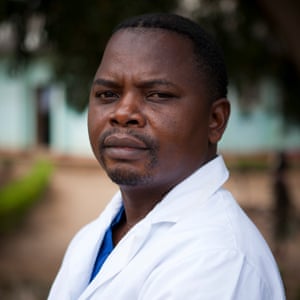
Alfred took the fexi tablets he was given in hospital once a day for 10 days and was cured. His problems are not over: his arm is still too weak for paddling or fishing; his wife has left him; and someone stole his boat while he was ill.
“I want my wife to come back but now it is not possible because I must bring money into the family,” he says. His uncle is still not speaking to him. “I must find a solution, because living this way is not good. My mother and I are just alone. We need to make it up, but my uncle doesn’t want that.”
Dr Wilfried Mutombo Kalonji of DNDI, the coordinator of the trials, cannot forget two patients who died from melarsoprol in 2004, when he was a young doctor in Kasai province. It marks you. “Both men were about 20 or 25, and young and strong. I was the only medical doctor for about 800 people. They came in and we did the lab tests and found they had sleeping sickness and I gave them the only treatment we had. The guys started feeling worse and worse. They had seizures and confusion, went into a coma and died.
“They come with their parents and they trust you. Sometimes the family will look at you like a criminal, as if to say: ‘You killed my son.’ This was a very, very bad experience.
“Melarsoprol was terrible. We also had many relapsed cases. In Kasai, half the patients relapsed. Half were cured but half were not.”
Kande, who rose to become the first director of DRC’s sleeping sickness programme, lobbied for diagnostic tests and treatments with the World Health Organization, donors, European tropical medicine institutions, NGOs and anyone else who would listen. The arrival of the Catt test was his first triumph. But he, like every other doctor who had nothing else to give his patients, was appalled by the deaths from melarsoprol.
“I asked the question at that time, at the WHO – ‘We don’t have drugs, the few drugs we have cause severe side effects, they kill, people die. What are we to do?’” he says. None of the pharmaceutical companies wanted to help. There was no chance of any financial reward.
DNDI was set up in 2003 to find drugs for a group of tropical diseases for which there could be no profit for pharma. For sleeping sickness, it decided to trial a combination including a drug called eflornithine, which worked in the second stage but was prohibitively expensive – although it made money in the west in hair removing cream. Combined with other drugs as nifurtimox-eflornithine (Nect), less of it would be needed, making it cheaper.
Clinical trials are complicated, bound up with rules and protocols that make them difficult even in Europe and the US. Running such a thing in the heart of DRC was at the very least ambitious.
Dilapidated local hospitals had to be refurbished. Wards needed paint; they needed new, easily cleanable floors, better beds, an incinerator for hospital waste, microscopes, centrifuges, ECG machines to check the health of hearts, and other equipment to meet standards required in the western world. Hospitals had to be selected that were reachable by the small planes run by the Mission Aviation Fellowship, which transports aid workers. Local medical staff had to be trained in record-keeping and how to gain informed consent from a sick patient who cannot read or write and has no concept of what a clinical trial might be.
“We developed tools and pictures, explaining in a very easy way,” says Dr Wilfried. “Most patients are poor. We provide food and the treatment is free. So to be fair, we give food and free care to all the patients with sleeping sickness, whether or not they are on a trial.”
Nect was licensed with the help of trial evidence from DRC in 2009. But it has to be given through twice daily infusions by trained staff in a hospital for a week. The kit for one patient weighs 10 kilos. DNDI’s investigators were given access to some of the big pharmaceutical companies’ compound libraries, where records are kept of molecules that have been discovered but for which a commercial use has not yet been found. They hit on fexinidazole, which Hoechst, now part of Sanofi, had begun testing in the 1970s but abandoned when it appeared there was no longer a big market in the affluent west for drugs against infectious diseases. Pharma focused on cancer, heart disease and other chronic illnesses instead.
DNDI’s trial compared patients on NECT with those on fexi. The cure rate was much the same, but the advantages of fexinidazole were great. It works in both stages one and two, obviating the need for a painful, invasive lumbar puncture to identify the relevant type. It is in pill form, which makes it easy to transport and administer. The Congolese doctors are now waiting to hear whether fexi will be approved by the European Medicines Agency.
It’s a triumph for the Congolese doctors, who are now moving into trials of another pill, which they hope will be a single-dose cure that patients could take at home.
Dr Erick Miaka, the head of DRC’s sleeping sickness programme, says the hardest cases are the last ones – not only villagers in the remotest places, where motorbikes can’t reach, but also people in more accessible homes who don’t come for screening because they no longer fear it. He is looking forward to getting 15m tsetse fly traps in place on the rivers to cut the chain of transmission. “In 2019 it is necessary to intensify all the activities, if possible,” he says.
He is proud of what they have achieved in DRC. It is a quiet triumph for a country that has such a bad image. “On the TV they talk more of the war in the east than the medical success story,” he says with a wry smile.
Commenting on this piece? If you would like your comment to be considered for inclusion on Weekend magazine’s letters page in print, please email weekend@theguardian.com, including your name and address (not for publication).
This article is part of a series on possible solutions to some of the world’s most stubborn problems. What else should we cover? Email us at theupside@theguardian.com

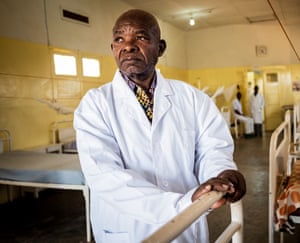
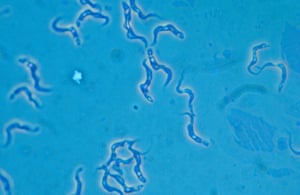

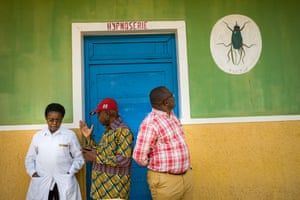
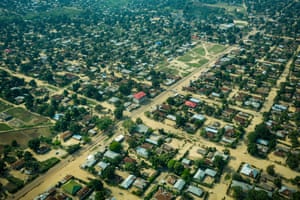
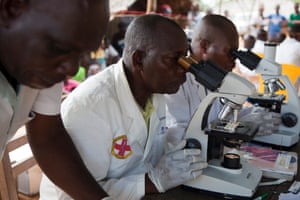
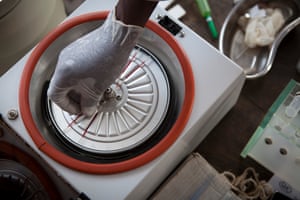
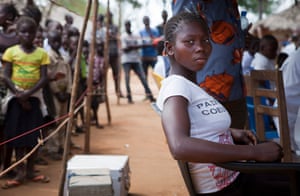


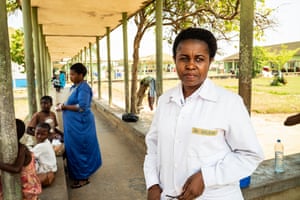

沒有留言:
張貼留言